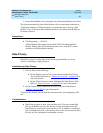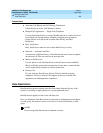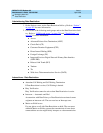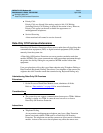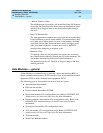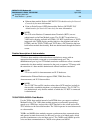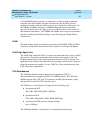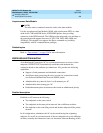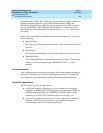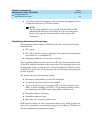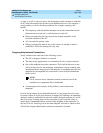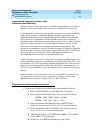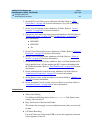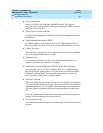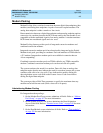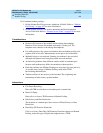
DEFINITY ECS Release 8.2
Administrator’s Guide
555-233-506
Issue 1
April 2000
Managing data calls
409Administered Connection
15
through tie trunks (ISDN, DS1, or analog tie trunks) and intermediate switches. If
required, route the connection via Automatic Route Selection (ARS) and
Generalized Route Selection (GRS) through the public network. The call routes
over associated ISDN trunks. When the far-end answers, a connection occurs
between the far-end and the near-end extension in the
Originator field on the
AC screen.
Because the system makes an administered connection automatically, you do not
use the following:
■ Data Call Setup
Do not assign a default dialing destination to a data module when it is used
in an AC.
■ Data Hotline
Do not assign a hotline destination to a data module that is used in an AC.
■ Terminal Dialing
Turn off terminal dialing for data modules involved in an AC. This prevents
display of call-processing messages (INCOMING CALL,...) on the
terminal.
Access endpoints
Access endpoints are non-signaling trunk ports. They neither generate signaling to
the far-end of the trunk nor respond to signaling from the far-end. Designate an
access endpoint as the originating endpoint or destination endpoint in an AC.
Typical AC applications
The following are typical AC applications:
■ A local data endpoint connection to a local or remote-access endpoint.
Examples: an MPDM ACCUNET digital service connecting to SDDN via
an ISDN trunk-group DS1 port; an MPDM ACCUNET digital service
connecting to an ACCUNET Switched 56 Service via a DS1 port.
■ A local-access endpoint connecting to a local or remote-access endpoint.
Examples: a DSO cross-connect and a 4-wire leased-line modem to a
4-wire modem connection via an analog tie trunk.



